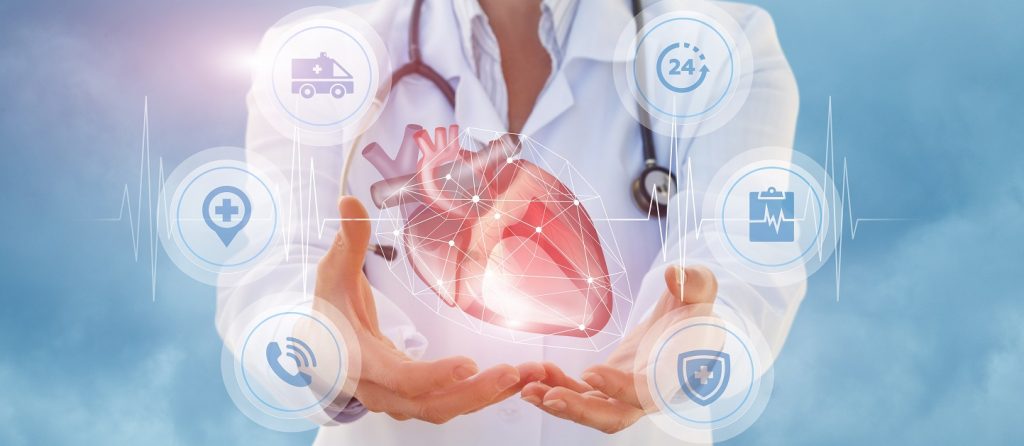Chronic Disease and Exercise
PowerCert

Authors: Tina Schmidt-McNulty MS RCEP RN, June Chewning BS MA Exercise Phys, Soraya Parr AEA ACE NSCA American Lung Assoc.
Description:
Grow your earning potential through exercise for prevention and management of chronic disease. Learn how to properly screen clients and create safe and effective exercise programs for clients with heart disease, cancer, pulmonary disease, and diabetes mellites. This Power Certificate Program will help you diversify and deepen your knowledge base, giving you the ability to attract and effectively train this fast-growing population.
Education Level: Intermediate to Advanced
Prerequisites: NAFC Personal Training Certification, or NAFC Group Fitness Instructor Certification, or a College Degree in the Fitness Field, or an approved Equivalent.
Target Audience: Health-Fitness Professionals, Allied Health and Medical Professionals.
$240.00
Course Information
- Course 1: Health Appraisal and Risk Assessment Online Interactive Course (3 Hours)
- Course 1 Online Exam
- Course 2: Healthy Heart for a Healthy Life Online Interactive Course(3 Hours)
- Course 2 Online Exam
- Course 3: Exercise, Diabetes, and Metabolic Syndrome Online Interactive Course (3 Hours)
- Course 3 Online Exam
- Course 4: Respiratory Rescue: Understanding the Pulmonary Dysfunctional Client Online Interactive Course (3 Hours)
- Course 4 Online Exam
- Course 5: Essential Exercise for Cancer Patients and Survivors Online Interactive Course (2 Hours)
- Course 5 Online Exam
Time to Complete: 18 Months to complete Examination Process
Course Access: Continued access with updates available
Course Objectives: Health Appraisal and Risk Assessment
After completing this course you will be able to:
- Understand the importance and necessity of health appraisal and risk assessment for all clients.
- Learn how to properly perform a health appraisal.
- Understand ACSM risk factor thresholds for coronary artery disease.
- Be familiar with the signs and symptoms suggestive of cardiovascular and pulmonary disease.
- Be able to place your client into an ACSM risk stratification to determine whether a physician’s consent is necessary.
- You will practice the health appraisal and risk assessment process with sample clients.
Course Objectives: Healthy Heart for a Healthy Life
After completing this course you will be able to:
- Recognize basic structures in the anatomy of the heart.
- Describe coronary heart disease and identify common diseases of the heart.
- Discuss the parameters for 8 primary risk factors, basic risk factor analysis, and 4 additional factors affecting the development of heart disease.
- Describe the basic progression of heart disease.
- Discuss the nature of symptoms for heart disease and the symptoms of heart attacks for women and men.
- Identify 7 medical tests typically used in the diagnosis of heart disease.
- Discuss 6 complications of heart disease.
- Describe general treatment and 4 commonly used medications for treatment of heart disease.
- Discuss the cardiac rehabilitation process and identify the 4 phases of cardiac rehabilitation.
- Discuss the 4 parameters of exercise programming for clients with heart disease and 5 parameters for exercise recommendations for prevention of heart disease.
- Identify 9 recommendations for prevention of heart disease.
Course Objectives: Exercise, Diabetes, and Metabolic Syndrome
After completing this course you will be able to:
- Identify and discuss 5 risk factors for metabolic syndrome.
- Recognize signs and symptoms for high blood pressure and diabetes.
- Discuss the causes of metabolic syndrome.
- Discuss statistics, symptoms, and 3 stages of diagnosis for diabetes.
- Identify and discuss 3 common forms of diabetes.
- Describe 5 components for managing diabetes.
- Discuss physical activity goals and exercise and weight management recommendations for diabetes.
- Explain 6 ways to prevent diabetes and metabolic syndrome including lifestyle changes.
Course Objectives: Respiratory Rescue: Understanding the Pulmonary Dysfunctional Client
After completing this course you will be able to:
- Identify 17 terms and definitions pertaining to pulmonary function and disease.
- Briefly describe the role of oxygen in the human body.
- Discuss the role of exercise training in pulmonary function.
- Identify the divisions and basic anatomy of the respiratory system, and the muscles involved with inspiration and expiration.
- Describe pulmonary circulation and air flow/gas exchange in the human body.
- Describe 4 breathing exercises for clients with pulmonary dysfunction.
- Discuss 12 recommendations for working with clients with chronic pulmonary dysfunctions.
- Discuss 3 general categories of medication for pulmonary dysfunction, including side effects and effects on exercise.
- Discuss contraindications and symptoms for exercise termination for clients with pulmonary dysfunction.
- Describe symptoms and causes of asthma and the ACSM FITT-VP recommendations for individuals with asthma.
- Describe symptoms, 3 forms, causes, and 8 special considerations for clients with COPD and the ACSM FITT-VP recommendations for individuals with COPD.
- Discuss four other conditions that can affect the function of the respiratory system.
- Describe the affects of submersion and hydrostatic pressure, general recommendations, and 8 considerations for aquatic exercise for clients with pulmonary dysfunction.
Course Objectives: Essential Exercise for Cancer Patients & Survivors
After completing this course you will be able to:
- Discuss and recognize cancer facts, types, 2 stages, 5 risk factors, and multiple causes.
- Recognize how diet and physical activity can play a role in all aspects of cancer.
- Discuss 5 treatments used in the cancer process.
- Describe the role exercise plays in prevention, progression, and rehabilitation of cancer.
- Describe 13 exercise contraindications and 6 special considerations for clients with cancer.
- Recognize safe and effective basic exercise guidelines for cardiorespiratory, resistance, and flexibility training for clients with cancer or recovering from cancer.
- Describe safe and effective basic resistance training exercises for 5 basic muscle groups with varying levels to be used for clients in various stages of the cancer process and recommendations for flexibility exercises.
The 5 courses together are approved for the following CE credit:

